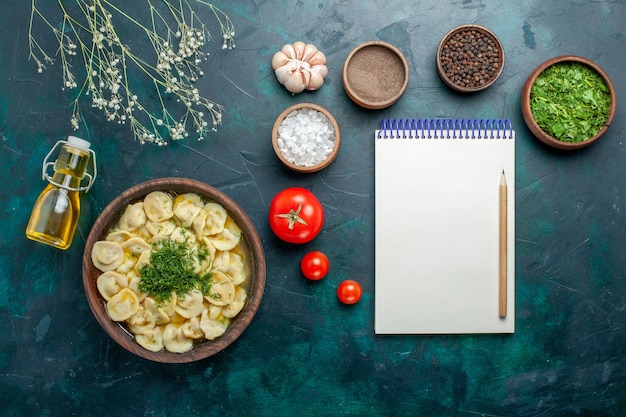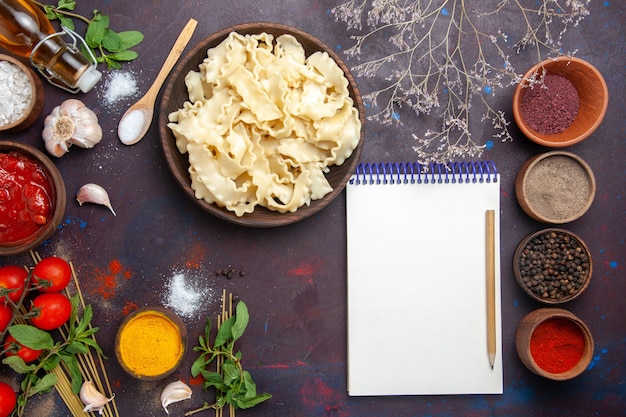The Foundation of Your Lasagna: Understanding Lasagna Noodles

Navigating the Noodle Landscape: Fresh vs. Dried
The world of lasagna noodles presents a delightful dilemma: fresh or dried? Both have their merits, and the choice boils down to your personal preference and the time you're willing to invest. Fresh Lasagna Noodles: Think of fresh lasagna noodles as the gourmet option. They're often found in Italian delis or specialty grocery stores. Their texture is delicate, and they have a delightful "al dente" bite that melts in your mouth. But, there's a catch – they require a bit more TLC. Fresh noodles are more fragile and have a shorter shelf life, so you'll need to find a reliable source and use them promptly. Dried Lasagna Noodles: For everyday lasagna adventures, dried lasagna noodles are your trusty companions. They're readily available at most supermarkets, have a longer shelf life, and hold their own in the flavour department. They offer a pleasingly firm texture that stands up well to the baking process.Deciphering the Package: Choosing the Perfect Noodles
Now that you've chosen your noodle camp, let's dive into the nitty-gritty of selecting the perfect noodles. Look out for these key elements on the packaging: Width: You want noodles that are about 1/4 inch wide, offering a good surface area for your sauce and cheese. This ensures that each layer is generously coated and infused with flavour. Thickness: A lasagna noodle's thickness plays a crucial role in its performance. Avoid noodles that are too thin or too thick. Aim for a medium thickness, ensuring they can hold their shape without becoming mushy while still cooking through evenly. Brand: Just like with any other ingredient, some brands are simply better than others. Over the years, I've learned to trust certain brands known for their high-quality pasta, their noodles consistently delivering on texture, flavour, and performance.Preparing the Noodles: A Crucial Step

Pre-Cooking: A Matter of Choice
Here's where opinions diverge. Some cooks swear by pre-cooking their noodles, while others believe in throwing them straight into the sauce. The Case for Pre-Cooking: I've always found pre-cooking to be the safer bet. It ensures that the noodles are cooked through and prevents them from becoming rock-hard or overly soggy during the baking process. This method guarantees a consistently tender texture that melts in your mouth. The Case Against Pre-Cooking: Some argue that pre-cooking can make noodles too mushy, compromising the overall texture of the lasagna. If you choose to skip pre-cooking, make sure your sauce is generously wet and keep a watchful eye on the noodles in the oven.The Art of Boiling Lasagna Noodles
If pre-cooking is your chosen path, then let's embark on the boiling process: 1. Boiling Water: Fill a large pot with salted water and bring it to a rolling boil. Salt adds flavour to the noodles and helps them cook evenly. 2. Adding the Noodles: Gently add the noodles to the boiling water, ensuring they are submerged. Avoid overcrowding the pot, as this can hinder proper cooking. 3. Cook Time: Follow the package instructions for cooking time, which will usually be around 5-7 minutes. The key is to cook them until they're just tender but still have a slight bite. Overcooked noodles will turn mushy.4. Tasting Test: To ensure perfect doneness, remove a noodle from the pot and taste it. It should be soft but not completely floppy. 5. Draining and Cooling: Once cooked, drain the noodles in a colander and immediately rinse them with cold water. This stops the cooking process and prevents them from sticking together. Allow the noodles to cool completely before using them, helping them retain their shape during the baking process.Layering the Lasagna: Crafting a Culinary Masterpiece

The Foundation: Building a Flavorful Base
Start by spreading a generous layer of sauce in your baking dish. I love using a chunky tomato sauce with a hint of sweetness, adding depth and richness to the lasagna.Layering the Noodles: A Symphony of Texture
Now, here comes the art of layering the noodles. You'll want to overlap them slightly, creating a solid base. Don't be afraid to break a noodle or two if necessary. Your goal is to create an even layer that covers the entire dish, ensuring no gaps or uneven spots.The All-Important Sauce and Cheese: Adding Layers of Flavor
After laying your noodle base, add another layer of your delectable sauce, ensuring each noodle is generously coated. Now, it's time for the cheese! I'm a huge fan of a blend of mozzarella, ricotta, and Parmesan. This trinity creates a creamy, cheesy heaven that's both flavorful and satisfying.Repeating the Cycle: Building the lasagna layers
Repeat the layering process of noodles, sauce, and cheese until you reach the top of your dish. Typically, you'll end up with 3-4 layers, creating a symphony of flavour and textures.The Grand Finale: The Top Layer
For the final layer, I prefer a blend of mozzarella and Parmesan cheese. This creates a beautiful golden brown crust that adds a beautiful textural contrast and a wonderful salty flavour.Baking the Lasagna: The Final Act
We're almost there! Now, we need to bake our lasagna masterpiece to perfection.Preheat Your Oven: Setting the Stage
Preheat your oven to 375°F (190°C). This ensures even cooking and helps the cheese melt beautifully.Baking Time: The Countdown Begins
Bake the lasagna for approximately 30-40 minutes, or until the cheese is bubbly and golden brown.Resting Time: Allowing Flavors to Mingle
After baking, let the lasagna rest for at least 10 minutes before cutting and serving. This allows the filling to settle and makes it easier to slice cleanly.Tips and Tricks: Elevating Your Lasagna Game
You've mastered the basics, but let's explore some tips and tricks that can take your lasagna to the next level.1. Embrace Experimentation: Unleash Your Culinary Creativity
Lasagna is a very versatile dish. Don't be afraid to experiment with different sauces, cheeses, and fillings. You can add a touch of spice with some red pepper flakes, add a layer of spinach for a burst of green goodness, or even use a béchamel sauce for a richer, creamier experience.2. Invest in Quality: Using Premium Ingredients
The quality of your ingredients plays a significant role in the taste of your lasagna. Invest in high-quality tomatoes, cheese, and herbs. Fresh, flavorful ingredients will elevate your lasagna from ordinary to extraordinary.3. Don't Overcrowd: Giving Room to Breathe
Ensure enough space between the noodles for the sauce to penetrate. Overcrowding can lead to a soggy lasagna, which is a culinary tragedy no one wants to experience.4. Choose a Spacious Dish: Preventing Spillover
Use a baking dish with high sides to prevent the sauce from spilling over the edges during baking. A well-contained lasagna ensures even cooking and a beautiful presentation.5. Stay Vigilant: Monitoring the Oven
Check the lasagna periodically to make sure it's not burning. You can adjust the baking time if needed. Overcooked lasagna is a culinary tragedy!6. Slicing with Confidence: A Clean Cut
When slicing the lasagna, use a sharp knife and cut through the entire dish in one motion. This will prevent the lasagna from falling apart and ensure a clean, elegant presentation.7. Share with Love: A Culinary Celebration
Lasagna is a dish best shared with friends and family. So, enjoy your hard work and revel in the deliciousness!FAQs: Addressing Common Lasagna Queries
What if my lasagna noodles are too thick?
Don't fret! You can thin them out by rolling them gently with a rolling pin. Be careful not to tear them.
Should I use pre-made sauce or make my own?
That's entirely up to you! If time is a luxury you don't have, pre-made sauce is a great option. But if you have the time and inclination, making your own sauce from scratch will infuse your lasagna with an unparalleled depth of flavour.
Can I add vegetables to my lasagna?
Absolutely! Spinach, mushrooms, peppers, and zucchini are all wonderful additions. Just make sure they're cooked thoroughly before adding them to the dish.
How long can I keep lasagna in the fridge?
Lasagna can be stored in the fridge for up to 3-4 days. Ensure it's completely cooled before storing it.
What if my lasagna is too dry?
Add a little bit of extra sauce or water to the dish before baking. You can also sprinkle a bit of mozzarella cheese on top to help keep it moist.
Enjoy your lasagna adventure!Everyone is watching

Prime Rib Roast Cooking Time Chart: Per Pound Guide
Cooking TipsPrime rib roast. Just the name conjures images of lavish dinners, crackling fires, and hearty laughter. It’s ...

How Long to Bake Potatoes in the Oven (Perfect Every Time)
Cooking TipsBaked potatoes are a staple in my kitchen. They're incredibly versatile, delicious, and surprisingly easy to m...

Perfect Rice Every Time: The Ultimate Guide to Cooking Rice
Cooking TipsAs a self-proclaimed foodie, I've always been a bit obsessed with rice. It's the foundation of countless cuisi...

The Ultimate Guide to Cooking Asparagus: Tips, Techniques, and Recipes
Cooking TipsAsparagus. The mere mention of this spring delicacy conjures up images of vibrant green spears, crisp and burs...

Ultimate Guide to Cooking the Perfect Thanksgiving Turkey
Cooking TipsThanksgiving. Just the word conjures up images of overflowing tables laden with delicious food, the scent of r...
